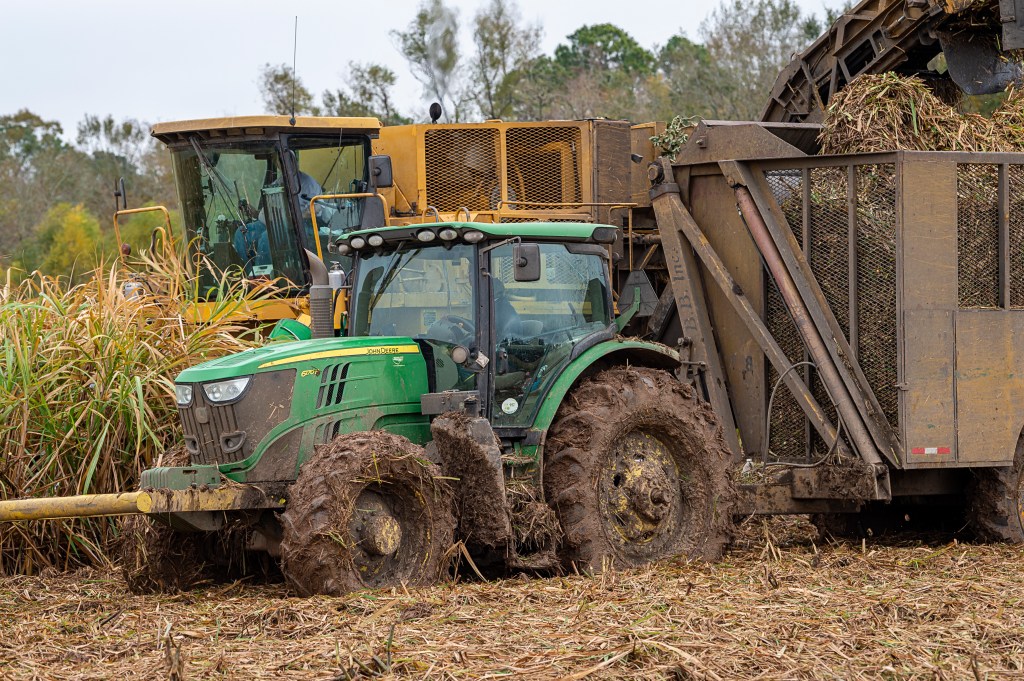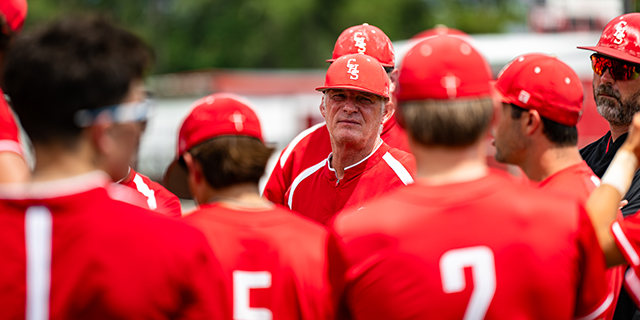A look at a typical day in the life of a sugar cane farmer
Published 8:00 am Tuesday, January 26, 2021

- Blanchard Farms does its own harvesting of its sugar cane. Lee Ball Photography
As the sugarcane harvest season comes to an end later this month, we learn from someone who has been working the fields since the age of 12 that the farm side of the industry really never ends, from preparing and planting to harvesting- and all that can happen in between.
At 28, Taylor Blanchard is a sixth-generation sugarcane farmer who has been driving tractors since he was 12. He works alongside his father, older brother and two uncles in the family business, Blanchard Brothers, helping oversee some 5,200 acres in Iberia and St. Mary Parishes.
Trending
Harvesting Winding Down
Like other sugarcane farmers, the Blanchards have been harvesting since October 3 and, depending on weather and operations at the mill, will finish around January 20.
Last year’s harvest season was interrupted by Hurricanes Laura and Delta. Two thirds of the Blanchard’s acreage on Hwy. 83, from Cypremort Point to Glencoe, was under water from Laura’s nine-foot surge and then again from Delta’s 7 to 8-foot surge. When the surge leveled out and the water dropped below the levee systems, 13 pumps worked to drain the water. Once the water was out, there was so much mud that it was nearly two weeks before tractors could drive on the headlands. Standing cane was knocked over and debris was washed in, which made getting in the fields with the harvester further difficult.
Morning
In talking about his daily duties during the season, Taylor smiles saying he’s not the first in the field, arriving around 7 a.m., but he’s usually the last to leave. Truck drivers leave the shop at 5:30 a.m. and the tractor drivers at 6 a.m.
“I’ll get a game plan with my brother in the morning, and together we’re the cleanup crew. I’m the all-around guy; I do it all,” he says. That includes “fixing the headlands,” keeping up with the drainage after a field is cut and coming behind the harvester to burn the shucks – or rake them instead if the fields are close to homes or roads.
Trending
Lunch
There is no “lunch break” in the fields. Like the rest of the harvest crew, Taylor and his brother eat on the run. “We grab lunch and go. My brother can eat two hot dogs in two minutes,” laughs Taylor.
During lunch, the mechanics bring fuel to the two combines, which run sun up to sun down.
Interesting note: According to Taylor, there are only 10 (Cameco 2600) harvesters in the world that can cut two rows at a time and Blanchard Brothers has three of them, actually running only two.
Taylor figures about 60 truckloads of cane are hauled each day, bringing about 160,000 tons to the mill each year.
Afternoon
After racking or burning the fields, Taylor spends the afternoons spraying a preemergent herbicide to keep winter grasses out. When cutting it complete for the day, two mechanics, along with two helpers, service the combines, refuel them and blow cane shucks off. The cane hauler trucks go to the shop where they are checked for tire pressure, any burnt lights and the likes, and they are parked there for the night.
At the end of the workday, around 4 p.m., Taylor sits in his truck figuring tonnage and acreage on a computer for the weekly report that goes to the mill. Their quota is anywhere from 1,500 to 1,900 tons a day.
At home, he enjoys a welcomed dinner at 7 p.m. with his wife, takes a welcomed shower, and hits the sack around 9 p.m.
A Short Break
When the last acre of cane is harvested all the equipment – trucks, trailers, wagons and harvesters – will be washed.
Taylor tries to fit in a duck hunt in the short lull before it’s time again to begin getting ready for spring by servicing the equipment.
Around February, he will begin fixing headlands and making sure there is proper drainage, and spraying herbicides. In March, he follows up with fertilizer; four to five spray rigs fertilize from 7 a.m. to 6 p.m. One small change to this year’s schedule: Taylor and his wife are expecting their first child on March 30. Then in May, when the land is drier, he’ll “lay by,” or cultivate the land one last time, bringing dirt to the base of the cane to help support it. Sometime between May and July, Taylor and his wife will take the opportunity to go to their camp in Grand Isle.
Precision grading is a service Blanchard Brothers provides to other farmers in June and July. Using GPS leveling equipment to guide him, Taylor drives a tractor with two dirt buckets to level the land or create a specific slope on a field to improve drainage and prevent erosion, keeping more farmable land.
Planting Season
Planting begins August 1. (Last year, the Blanchards finished just before Hurricane Laura hit land. Approximately 10 acres had to be replanted where rows and newly planted canes were washed out.)
Each morning, during this time, Taylor starts up the automatic cane planter at 7 a.m. The family plants “whole” stalks instead of pieces. To Taylor’s knowledge, they own the only “whole stalk planter” in the world, capable of planting three rows at one time.
It’s planting all day until about 6 p.m. On a good day, 100 acres are planted and on an average day – 70.
It all sounds routine, but it’s anything but, as Taylor says they face ongoing challenges from unpredictable weather and equipment breakdowns to “drivers tailgating and cutting off sugarcane tractors and trucks on the road.”
Ironically, it’s the unknown that he likes most about sugarcane farming. “Things can go from one extreme to the next fast,” Taylor says. “Every day you wake up and can have a game plan and something throws ‘a spike in the wheel.’ But, whenever life throws you a curve ball you swing and hit a homerun.”





